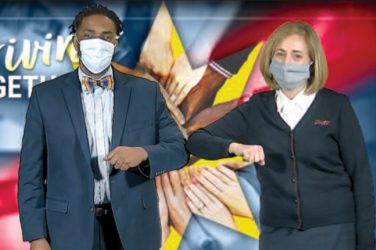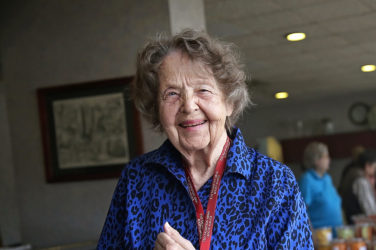 by Dr. Maribeth Swanson
by Dr. Maribeth Swanson
Territorial Social Services Secretary
Since 2020 the pandemic has impacted our daily thoughts, behaviors, decisions and relationships. While we’ve rightfully been focusing on keeping ourselves, those we care about and our communities safe, we may have overlooked an emerging trend that also will change our families, communities and corps life.
Increasingly, our families and communities are aging. The 2010 U.S. Census reported 13 percent of the population was 65 years and older, growing to 16 percent in 2020. In the Midwest states comprising the Central Territory, it was slightly above the national average at 17 percent. By 2040, it’s estimated 21.6 percent will be 65 and older.
So, don’t be alarmed if you observe those sitting in the pews on a Sunday or coordinating the corps cadet project are primarily older adults. Your corps is just mirroring what is happening. Many developed European and Asian countries have surpassed the U.S. in the proportion of over 65 population. In 2021, the United Kingdom stood at 18.9 percent, Sweden at 20.1 percent, and Japan at 28.7 percent. The impact of having low birthrates, along with higher quality of health care, have jointly contributed to an increasingly aging society.
Adults ages 65 and older have been disproportionally impacted economically, socially, emotionally and mortally by COVID-19. Having underlying health conditions made thousands of older adults more susceptible to the consequences of the coronavirus. Older people reported having an increase in feeling lonelier and sadder by 21 percent. Additionally, 38 percent reported feelings of disconnection to family and friends. Feelings of isolation, loneliness and lack of meaningful social connections can have a detrimental impact on physical and mental health. Findings from the 2020 U.S. Census indicate one in six adults, 55 years and older, were childless. More seniors are living alone or don’t have extended family relationships to provide caregiving or social supports.
Older workers also lost a higher percentage of jobs (15 percent), and it’s taking this group longer to return to the workforce due to having potential health conditions that put them at risk for contracting COVID-19 or due to age discrimination. Their slow return has reversed decades of increased involvement and forced thousands into early retirement their financial resources will not sufficiently sustain. There is potential for the number of older persons living in poverty to rise above the current threshold of 8 percent nationally.
Many adjustments had to be made to ensure that CDC guidelines were followed while ensuring that the needs for nutrition, social isolation and spiritual care were addressed for many senior-focused programs.
“We took our program outside to our local parks during the summer months,” said Karrie McGuire, director of older adult ministries at the Green Bay, Wis., Corps. “Our seniors were able to reconnect safely and enjoy musical guests, games and good Wisconsin summer treats.” The staff made periodic phone calls to check in on senior members. Delivery of Easter and other holiday goodie bags provided an opportunity for porch ministry. “What a joy to bring the word of our Savior Jesus Christ to our seniors during this very stressful and uncertain time,” remarked Karrie.
It’s time to adjust our lens on how we view older people. Fully acknowledging their dignity will not only impact how we serve older people but also how we engage them in the life of our corps and community ministries. There are multiple implications of an aging society on the family, healthcare, community, and the church. Here are a few questions to consider:
• What is your corps doing to disciple the older person in their walk with Christ?
• How are you integrating older persons into the life of your corps?
• How do you acknowledge stages of aging: young old (55–65 years), middle old (66–85), and old old (85 and older) and match service opportunities, as well as meeting their pastoral care needs, to these stages?
• What could your corps do to break isolation, loneliness and social disconnections with older persons involved in corps life, those who seek services, or volunteers? Together, let’s take the next step to, “Stand up in the presence of the aged, show respect for the elderly and revere your God. I am the Lord.” (Leviticus 19:32, NIV)




